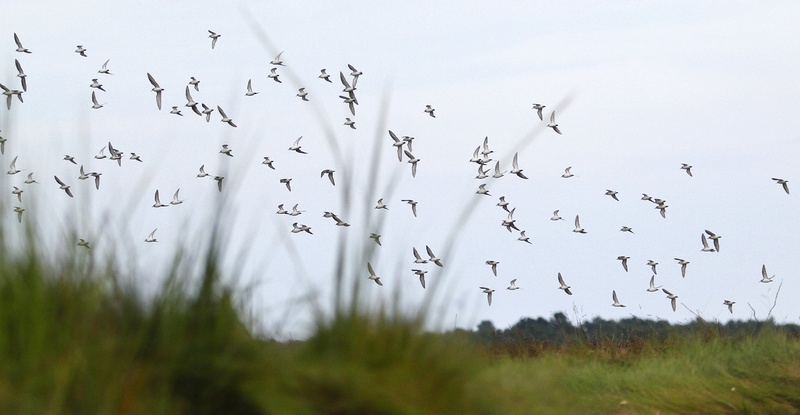PORTLAND — For biologists who have been studying birds in East Coast tidal marshes, superstorm Sandy couldn’t have come at a better time.
Just two months before Sandy pummeled New Jersey and New York last October, a research team completed the field work of a study looking at bird populations at risk due to the loss of tidal marshes from sea level rise. With that pre-storm data in hand, the researchers are now comparing the abundance of marsh plants and birds before and after Sandy in those same marshes, from Maine to Virginia.
Conclusions cannot be drawn yet, but it’s clear that Sandy devastated many marshes, said Brian Olsen, a University of Maine professor and a co-principal of the study, along with professors from the universities of Delaware and Connecticut and a biologist from the Maine Department of Inland Fisheries and Wildlife.
“Some of the places we’ve gone to, they used to be tidal marshes and now they’re sand dunes or now they’re open water,” he said. “That’s kind of extreme, but there are places where the tidal marshes are gone.”
The project, funded by a $200,000 grant from the National Science Foundation, will assess how well animal and plant populations in coastal marshes can weather change. The study specifically looks at whether the ability of certain plants and birds to withstand an extreme disturbance, such as a hurricane, is greater or less in marshes that are subjected to other stresses, such as sea level rise, development, pollution and invasive species.
Over the past three months, trained technicians visited 1,700 spots in hundreds of marshes where they listened to bird calls and wrote down their observations. They also used speakers and portable music players to play the calls of birds that don’t sing very often but will do so if they hear their own song. The technicians visited each place three times, and also took vegetation measurements during one of those visits to determine which plant species have been affected.
The data will be analyzed in the coming months, and the findings will become available next year.
Besides advancing a general understanding of the natural world, the information will be shared with government agencies, universities and nonprofits. It will help managers target specific marshes for restoration and identify which types of marshes are most vulnerable to future storms.
Greg Shriver, a University of Delaware ecology professor and another co-principal of the study, noted that millions of dollars will be spent to fix the damage caused by Sandy.
“After this year we’ll have the data to say if you’re going to restore tidal marshes, these are the ones that are most damaged, these are the ones that can be fixed, and these are the ones that should be fixed,” he said. “It’s a way to prioritize so you get the biggest conservation bang for the buck.”
The project is enhanced because the research team had so much data from so many places along a large stretch of the East Coast from its previous study, said Peter Alpert of the National Science Foundation.
The undertaking, he said, asks the basic question of whether stress makes an ecological system stronger or weaker.
“One possibility is things have been kind of tough in the past so you become tough. And then if something tough happens in the future you’re equipped to deal with it,” he said. “Another possibility is that things have been tough in the past and have weakened you, so when something tough comes along you’re less able to deal with it.”
Send questions/comments to the editors.



Success. Please wait for the page to reload. If the page does not reload within 5 seconds, please refresh the page.
Enter your email and password to access comments.
Hi, to comment on stories you must . This profile is in addition to your subscription and website login.
Already have a commenting profile? .
Invalid username/password.
Please check your email to confirm and complete your registration.
Only subscribers are eligible to post comments. Please subscribe or login first for digital access. Here’s why.
Use the form below to reset your password. When you've submitted your account email, we will send an email with a reset code.